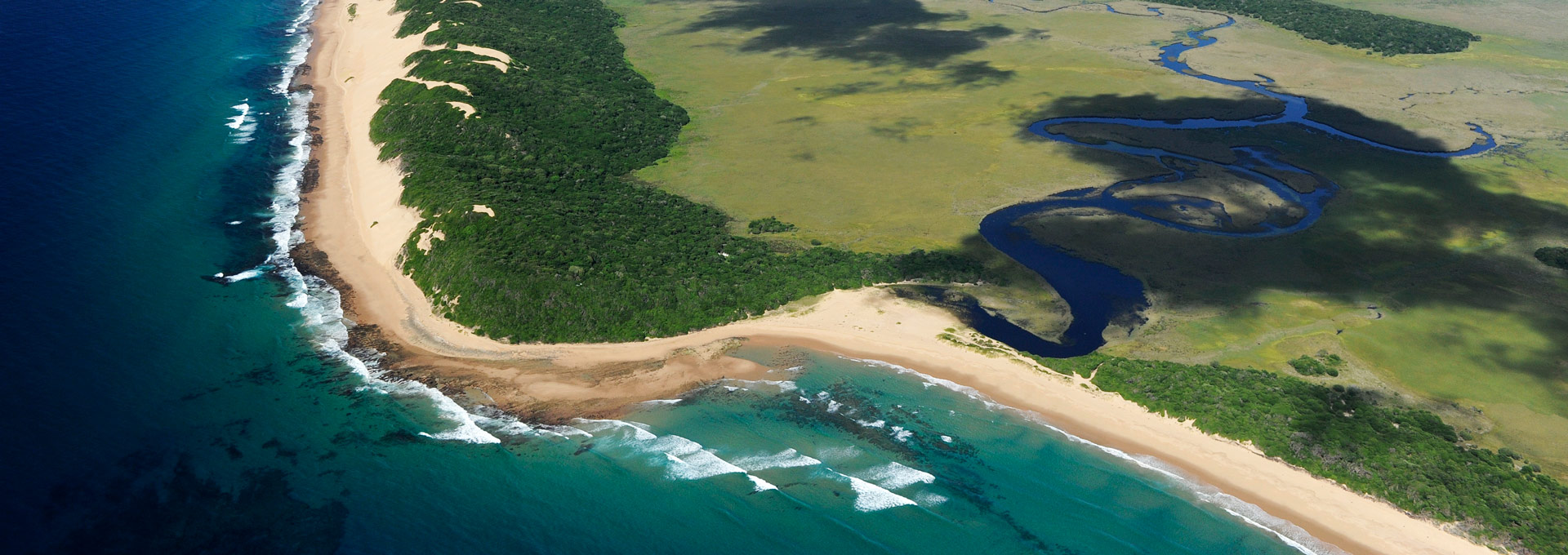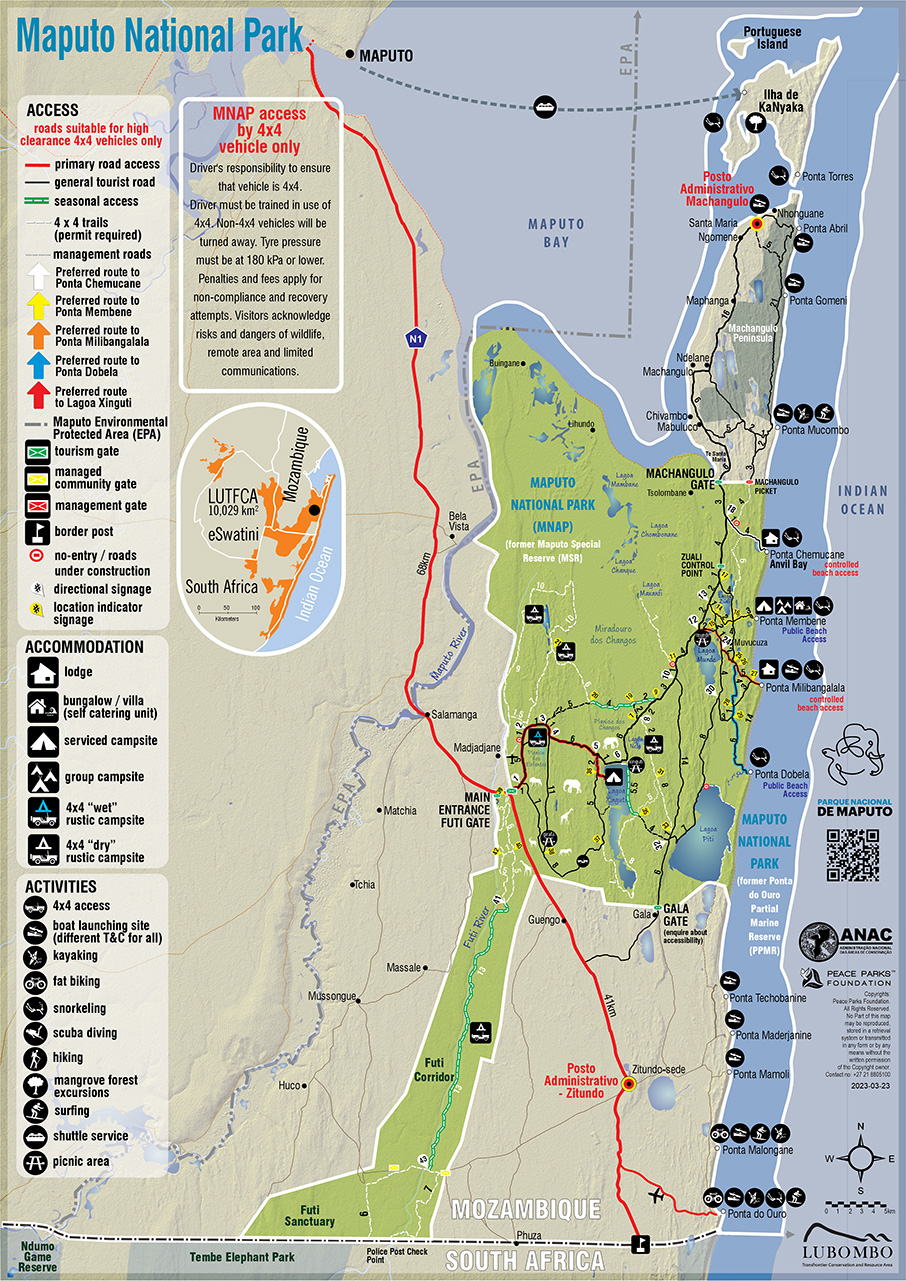Maputo National Park is a conservation area located in the district of Matutuíne in Maputo Province and on Inhaca Island in the municipality of Maputo, with the Indian Ocean to the east, Maputo Bay to the north, the Maputo River to the west and the border with South Africa to the south. It comprises a mosaic of ecosystems, both marine and coastal – namely beaches, bays, savannahs, grasslands, forests, freshwater lakes, floodplains and rivers – with important conservation value and excellent potential for high-value tourism. The PNAM is located within the Maputo Environmental Protection Area (APA), which is “an area of public domain that promotes harmonious interaction between human activity and nature. The APA allows for the multiple use of resources, managed in an integrated way, and encourages the development of activities that benefit and promote important ecological services for its residents and neighbours. It constitutes what is internationally known as a Protected Landscape”.
The PNAM, created on 7 December 2021, is the result of an amalgamation of two historically established protected areas, the Maputo Special Reserve and the Ponta do Ouro Partial Marine Reserve. Its extension is 1,718 km2 made up of terrestrial components (1,040 km2 ) and contiguous marine components of 678 km2.
The marine protected area is 67,800ha and stretches from Ponta do Ouro in the south to the mouth of the Maputo River in the north. It extends three nautical miles out to sea and includes the waters around Inhaca Island and Portuguese Island.





